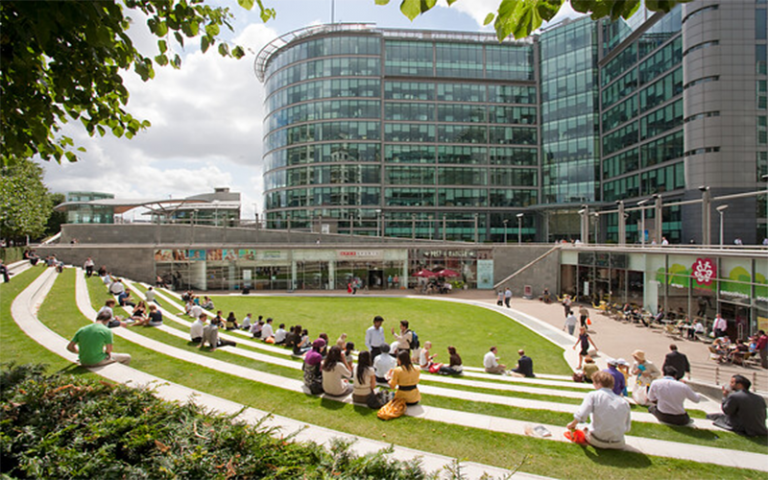My world: June 2021
13 May 2020
Chair, Yolande Barnes writes for The Property Chronicle setting out the future for real estate and the impact it will have on social living over the next year.

I can barely remember my crowded commute to work of the pre-CC1 (1st Covid crisis) era. In the continued absence of an effective vaccine and its consequent herd immunity, it’s just normal now for us all to create spaces between us that no microbes can bridge - even when we’re networking, drinking or socialising with friends. It’s as if we’ve all become very physically stand-offish but we’re learning to embrace with our voices and with eye contact rather than hugs.
Train boarding has become somewhat regimented and time-consuming so I’m glad I don’t need to be in the office that often. It is amazing how effective we have all become online, both technically and socially. Even endless online seminars and screen calls don’t exhaust me like they used to. The lockdown tested the limits of digital technologies in all sorts of ways but it was amazing to see how quickly solutions could be hacked and products improved as they became essential to day to day existence. Healthcare environments were the battleground upon which a wide range of new innovations emerged, rather like the space race in the 1960s.
Business models too have accelerated. Retailing, for example, is all but unrecognisable as supply chains have been shortened and procurement is now seen as important and sexy. Meanwhile, more household names have gone to the wall and producers of all sizes and types, in all sectors have developed much closer, direct relationships with their customers very quickly. AI and distribution robotics is bridging the gap between consumer demand and supply. A wide range of producers from agribusiness to artisans are using a combination of new technology and new types of real estate to first display and demonstrate, then debit and deliver their goods and services. Retail stores are being repurposed at speed: in high streets for display and demonstration, in out of town and failing malls for distribution and delivery.
Young, creative workforces welcome this escape to saner housing markets. Lockdown focused minds on high rents, cramped conditions and bad neighbourhoods in global cities, precipitating an exodus when it first lifted – and a distinct preference for houses with gardens rather than flats with no outside space. As the population starts to decline slightly, it’s as if London’s inhalation has become exhalation. Big cities, having breathed in and centralised, urbanised, densified and globalised over the last 3 decades are now breathing out, decentralising, dispersing and re-localising. CC1 accelerated that process.
These shifts in demand were first felt in the rental markets. Meanwhile, real estate transactions including housing purchases all but stopped during March, April and May last year. But then demand remained extremely low for the rest of the year too as so many would-be buyers had been drained of savings, incomes, job security, credit worthiness and confidence. It has remained extremely difficult to price the market when the primary casualty has been transaction volumes. At the same time, latent supply is high, supressing values. Death, divorce and debt are perennial sources of available housing stock and, sadly, there has been a lot of all of these since CC1.
Owners are choosing to let rather than sell in the current market, thereby withholding stock and reducing the number of forced sales. This has supressed rent levels and this has now started to be reflected in capital values. Lenders in possession of all types of property are behaving in imaginative ways, swapping, managing and stewarding new portfolios of distressed assets, adding value through hands-on property and customer experience management. (Having learnt lessons after flooding markets with distressed sales in the early 1990s) A few of these have managed to put together contiguous groups of assets and have turned them into something like privately owned business improvement districts. The first is now for sale and is rumoured to have been purchased by a family office and pension fund partnership - with the current management team very much part of the deal.
It seems to me that one economic impact of CC1 or ‘the Great Suppression’ was to complete what was started with the 2008 credit crunch. Lockdown may not have completely seen off the virus but it did finish off the ‘zombies’; the over-indebted companies, landlords and individuals who had survived only because of exceptionally low interest rates. It put an end to businesses, organisations and industries which were stuck in 20th century models of operation. We couldn’t have imagined this time last year quite how foreign 21st century would prove to be but it has proved to be the start of a period of extraordinary change and innovation.
In June 2021:
UK in recession : Yes
Sterling vs US$ : Higher
Sterling vs Euro : Higher
UK base rate : Lower than 1%
UK RPI : Lower than 2%, possibly negative.
Halifax UK house price Index : Lower
US President : Pence
UK/EU Trade Deal : No
UK/ USA Trade Deal : No
 Close
Close

